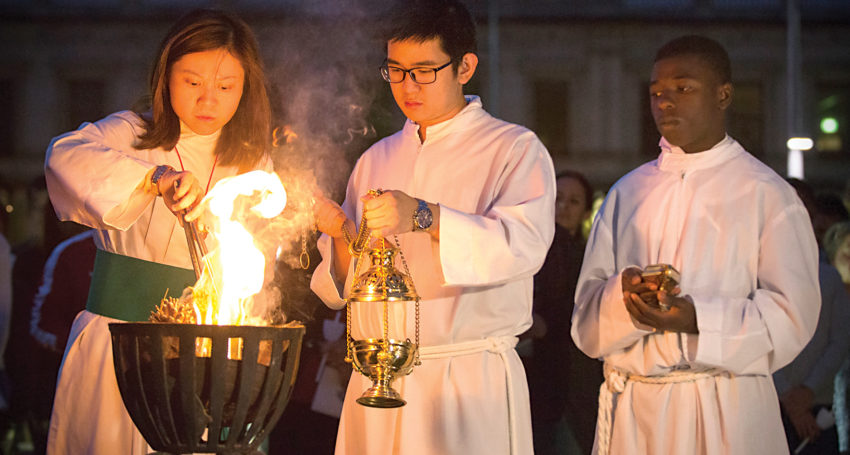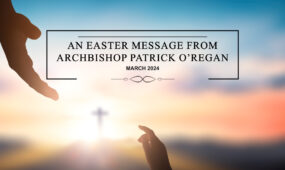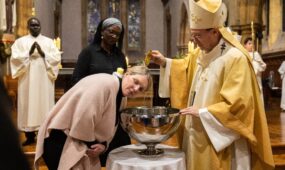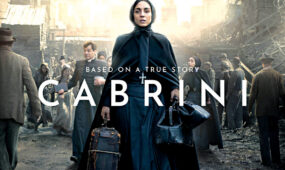The victory of love
Opinion
Easter is almost upon us. On April 14 we begin the Easter Triduum (pronounced trid-you-oom), the most important three days in the Church’s year, when we celebrate the mystery of Christ’s passion, death and resurrection.

It is as if the three days are stitched together into a single ‘great’ liturgy as we journey with Jesus from the Last Supper in the upper room, to the cross on Calvary, to the mystery and joy of resurrection. What begins with the Entrance Procession on Holy Thursday night continues seamlessly through Good Friday, the Easter Vigil, Easter Sunday morning and only ends with Evening Prayer late on Easter Day.
Advertisement
Before Mass on Holy Thursday evening, the tabernacle is emptied. We will not celebrate Eucharist together again until we celebrate Christ’s resurrection. It is as if we are entering a time of darkness. Indeed, the first words of the Triduum remind us that just as the Cross is at the centre of Christ’s journey, so it is for the community of the Church: ‘We should glory in the cross of our Lord Jesus Christ, for he is our salvation, our life and resurrection; through him we are saved and set free.’ In these COVID-19 times of fear and uncertainty many of us would have experienced loss, disruption and despondency. Beyond the pandemic, our war-torn and suffering world is surely experiencing its own Calvary. But it is the cross that unites to Christ, who takes our suffering upon himself and illuminates our path. Over these three days we will learn that victory only comes through love.
During the Last Supper, Jesus revealed the meaning of true, redemptive love. By washing the feet of his disciples he taught us that love reveals itself in service to others. By giving the bread and wine as his body and blood he substituted himself for the paschal lamb of the Passover meal and foreshadowed the total giving of himself on the Cross. There are no Concluding Rites at this Mass. Instead, the consecrated communion breads are taken in the ciborium (receptacle) to the Altar of Repose where the faithful may spend time in prayer.
We gather again in silence on Good Friday afternoon, to listen to the poignant story of the Suffering Servant, and St John’s account of the Lord’s Passion, readings that cut to the heart and reveal the all-encompassing, redemptive love of Christ. Between these two readings, the Letter to the Hebrews reminds us that all the baptised share in the priesthood of Christ and so are called to offer worship to God and to intercede for the entire world. Fittingly, then, the Readings are followed by the Solemn Intercessions, where the needs of our suffering world are placed before God.
The centre of Good Friday’s liturgy is the Veneration of the Cross. There is a single, large wooden cross, which priest, clergy and faithful all approach to venerate by means of a simple genuflection or other appropriate sign. The Veneration should be unhurried and accompanied by suitable hymns or chants. Holy Communion is then distributed and all depart in silence. The second stage of the three-days-in-one liturgy is completed.
Advertisement
The Easter Vigil begins after sundown on Holy Saturday evening. The large Easter fire represents destruction of the past and the birth of what is new. The Easter Candle is lit from this fire, spreading to the individual candles held by the faithful. Christ our Light shows the way. The great Easter proclamation, the Exsultet, tells the story of God’s journey from Creation to Redemption, a story ‘fleshed out’ in the Liturgy of the Word, with its seven Old Testament and two New Testament readings.
After the homily those who have been preparing for baptism are called forward. In the presence of the entire community they profess their faith, and are welcomed through baptism and confirmation into the Christian family. Their joy at becoming part of the Body of Christ is echoed by all present as they renew their own baptismal promises. Together, the newly baptised and the gathered Assembly celebrate Eucharist and come to the table of the Lord to receive him in Communion.
Alleluias ring out and Christ’s resurrection is proclaimed. His total giving of himself, even unto death, has not resulted in darkness and ignominy, but in resurrection and joy. He who was crucified is risen! Jesus presents us with a victory of love and the sure hope that dispels all our fears and uncertainties, our questions and our doubts. Christ the Lord is risen; he is risen indeed.
Jenny O’Brien is manager of the Office for Worship







Comments
Show comments Hide comments